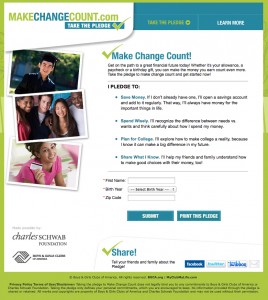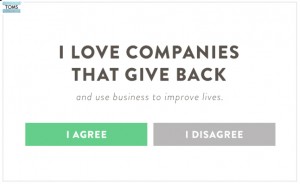Does your content have the power of a potato chip?
It should.
Because you know what they say about those potato chips — “you can’t eat just one!”
Wouldn’t it be great to know that once someone read your content, they’d be back? Again and again. Consuming more and more.
Well here’s a content marketing secret: You can make that happen. You simply need to trigger the Consistency Principle.
Use this decision-making shortcut to your advantage.
Social scientists who study how people make decisions have found some very interesting answers. And one of them concerns the Consistency Principle. It turns out that once someone makes a decision, they like to remain consistent with it in the future – and often do so automatically, with little to no thought.
Yes, you read that right.
If you can get your target to do something once, they are much more likely to do it again. And again. This is particularly true if your first ask is small. And even more so if the answer is public.
So exactly how can a content marketer use this information? Here are five ways you can trigger the Consistency Principle.
1. Encourage people to register.
When you ask people to register to access a site or receive content, it doesn’t have to require much on their part. But when they take that simple act, it gives you your first small yes.
After that, you can begin increasing your asks. For example, you can gradually collect more information about the person, or ask them to spend additional time with you via videos, white papers or webinars.
And if you ask them to register to receive new product information or sales alerts, you can then deliver those – along with the suggestion they buy. Since they requested the information, it would be consistent for them to act on it.
2. Invite them to sign a pledge.
Pledging to do something doesn’t require any actual behavior change at the time. But it does set the stage for later.
Invite your reader to sign an online petition. Or a page stating they support your “cause.” Then give them the option to share it via social media. You’ll have your first small yes. And it’ll be public.
After that, just remind them they took the pledge. It will have them reading and sharing your content. And position them to step up to the next level of engagement you seek.
3. Ask a question.
 It could be a single question. Or a short survey. Once your reader replies, present the opportunity to take an action that’s consistent with the answer they just gave.
It could be a single question. Or a short survey. Once your reader replies, present the opportunity to take an action that’s consistent with the answer they just gave.
I saw a terrific example of this one time I visited the Toms website. A window opened that read “I love companies that give back.” And beneath it were two buttons. One read “I agree” and the other “I disagree.”
When I clicked the agree button a message appeared explaining Toms is a company that gives back – and inviting me to make a purchase.
4. Label your reader.
Ok, that sounds worse than it is. Here’s what social scientists have found. If you tell someone they’re part of a particular group – if you label them — they’ll begin to behave as if they are a member of that group. This happens even if they didn’t previously think of themselves that way.
Want proof? Researchers interviewed a group of people about their voting habits and then randomly told half of them their answers meant they were more likely to vote. Come election day, 15% more of those people really did vote.
Again, the researchers didn’t base the label on anything factual. But people acted in a way that was consistent with their label. So tell your readers they are the kind of people that make wise choices (like using your product) or appreciate your style of service. And then watch them follow suit.
5. Get them to write it down.
Persuasion expert Robert Cialdini, in his book Influence: Science and Practice, reports that when people write something down, they feel compelled to live up to it.
The truth is, most people don’t like the way it feels to say one thing and do another. Social scientists refer to this as cognitive dissonance. And it’s not pleasant. So if someone has committed to something in writing, they feel the urge to support it, to ensure that what they say and do are consistent.
How can a content marketer use this? Have a contest and ask people what they’d do if you gave them a year’s free supply of your product. Or offer the chance to win your product by having people complete a statement that begins “I like (product name) because…”
It’s only human nature – if someone hopes to win, they’ll write something nice. And once they do, the Consistency Principle can take it from there.
So those are five ways to trigger the Consistency Principle to prompt ongoing engagement with your content. I know of at least one other. Feel free to ask me at Content Marketing Conference this May. And let me know how these five hacks work for you.
After all, our goal here to make you a content marketing master. So you really are … wait for it … all that and a bag of chips!


